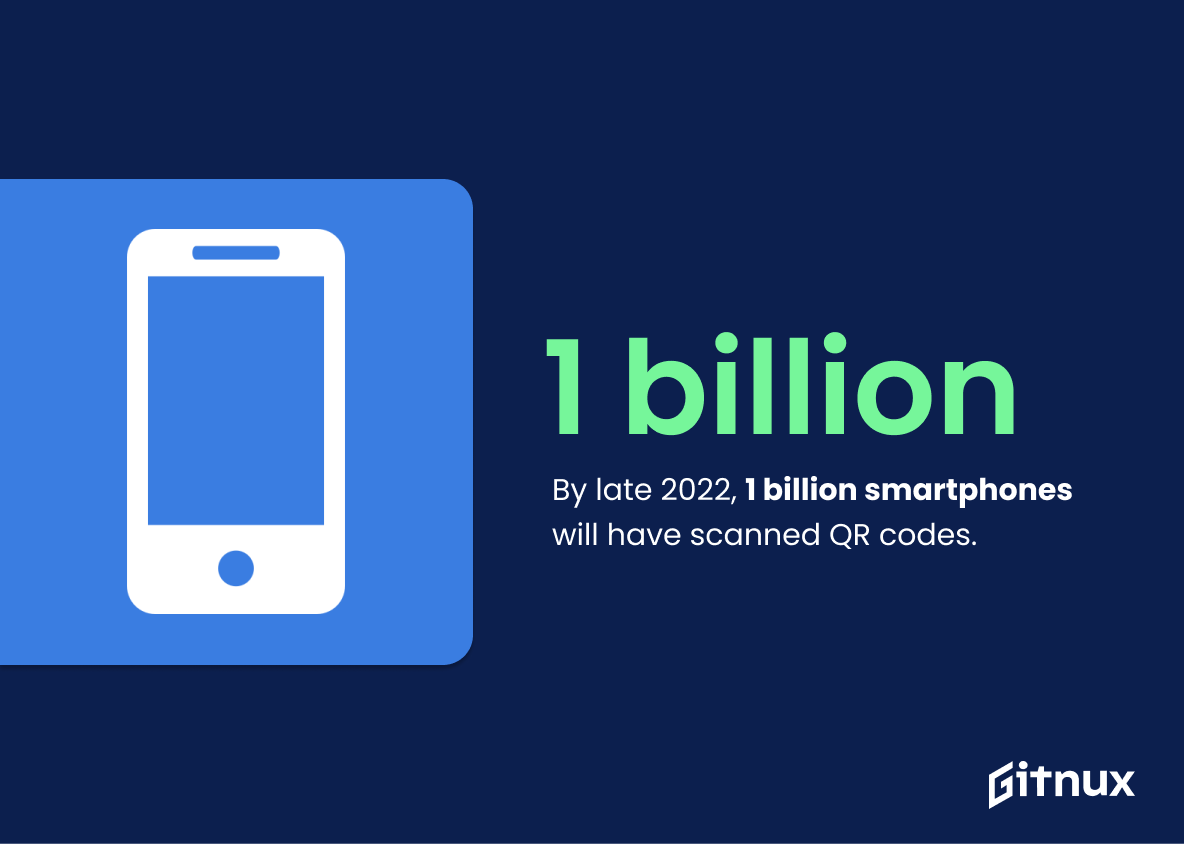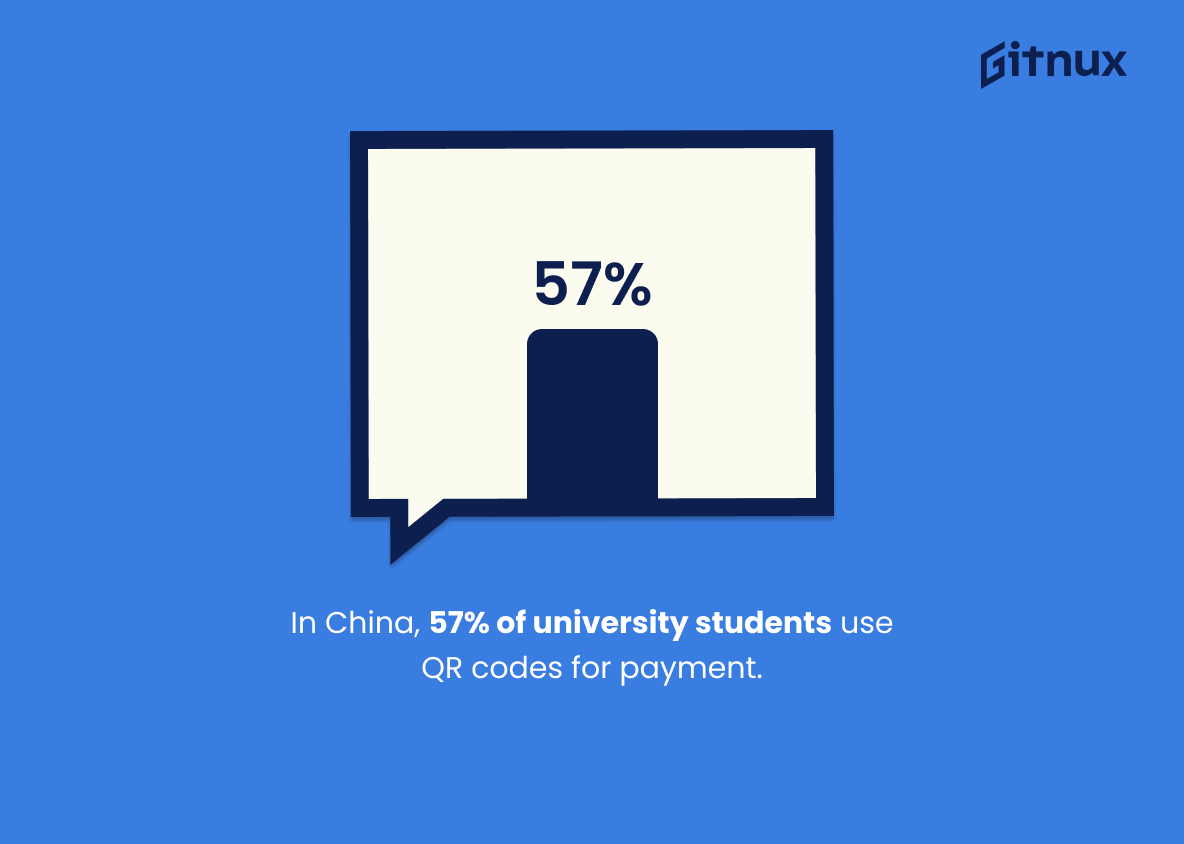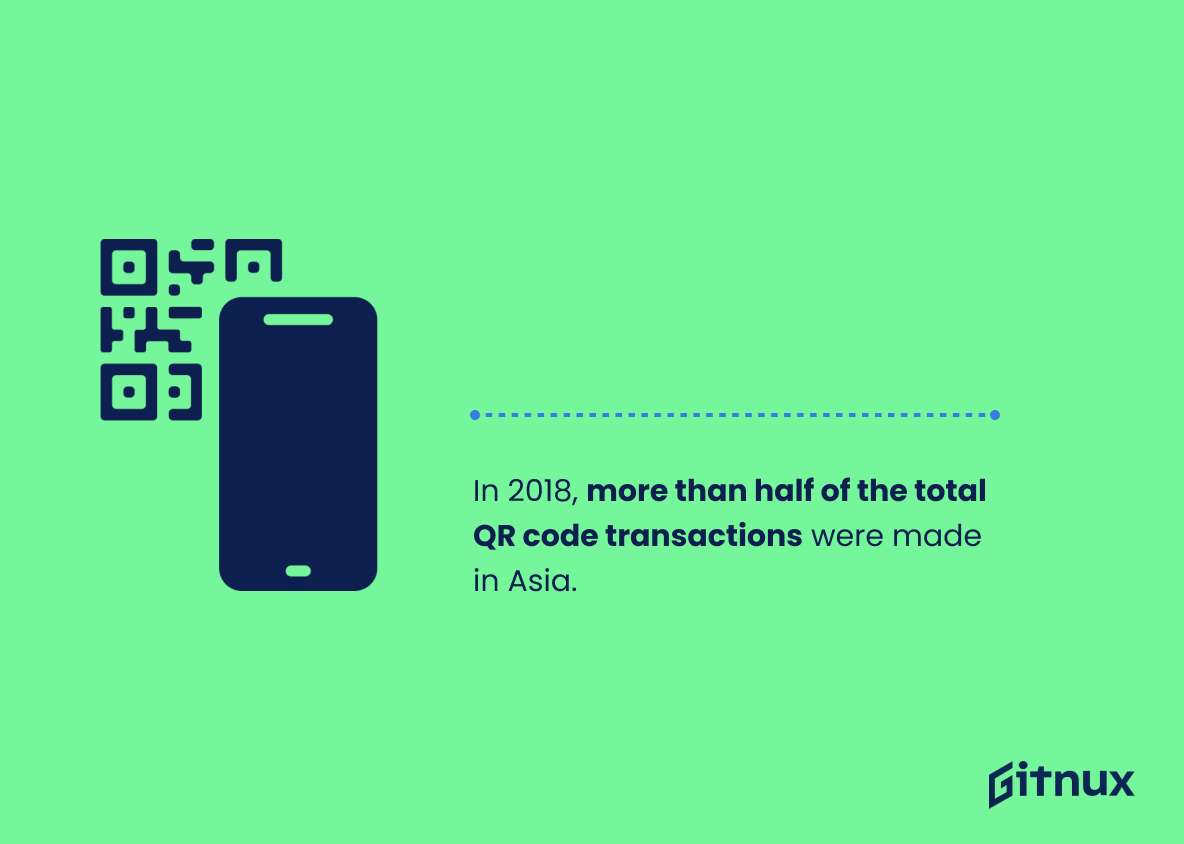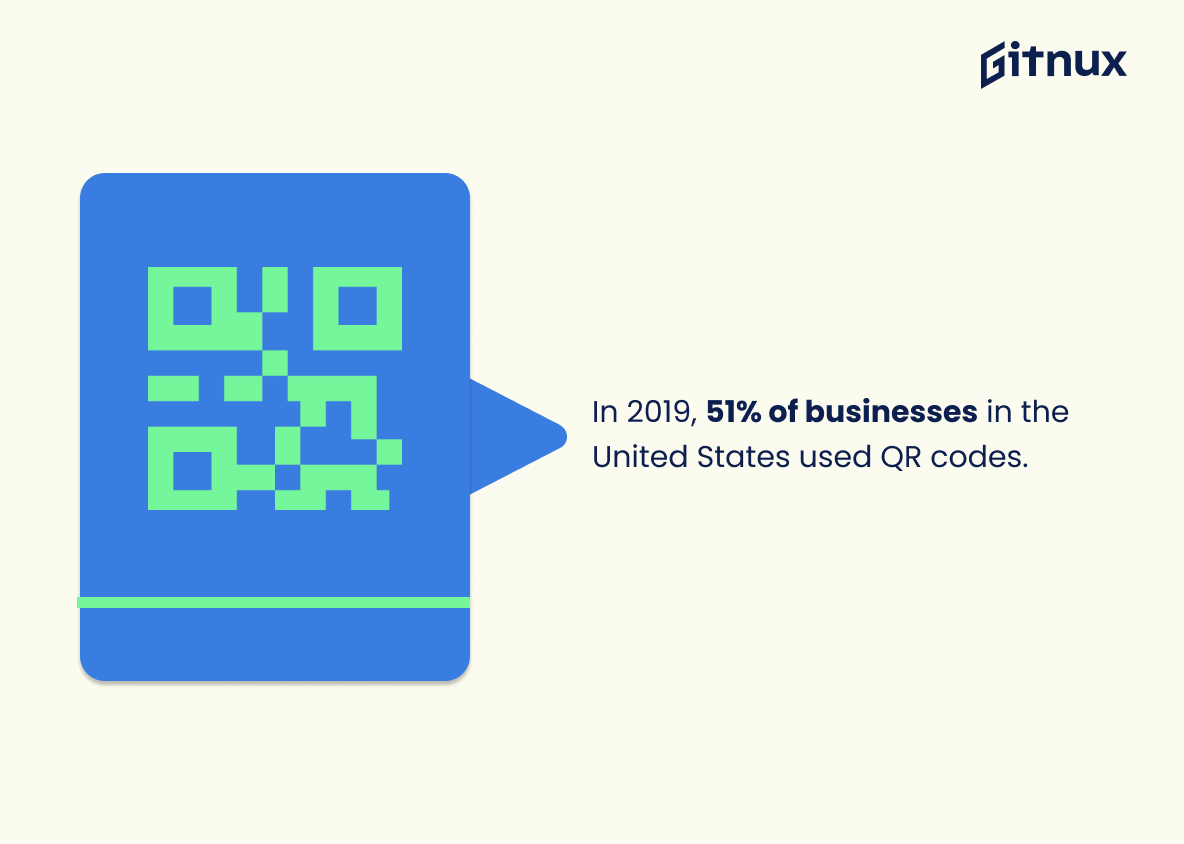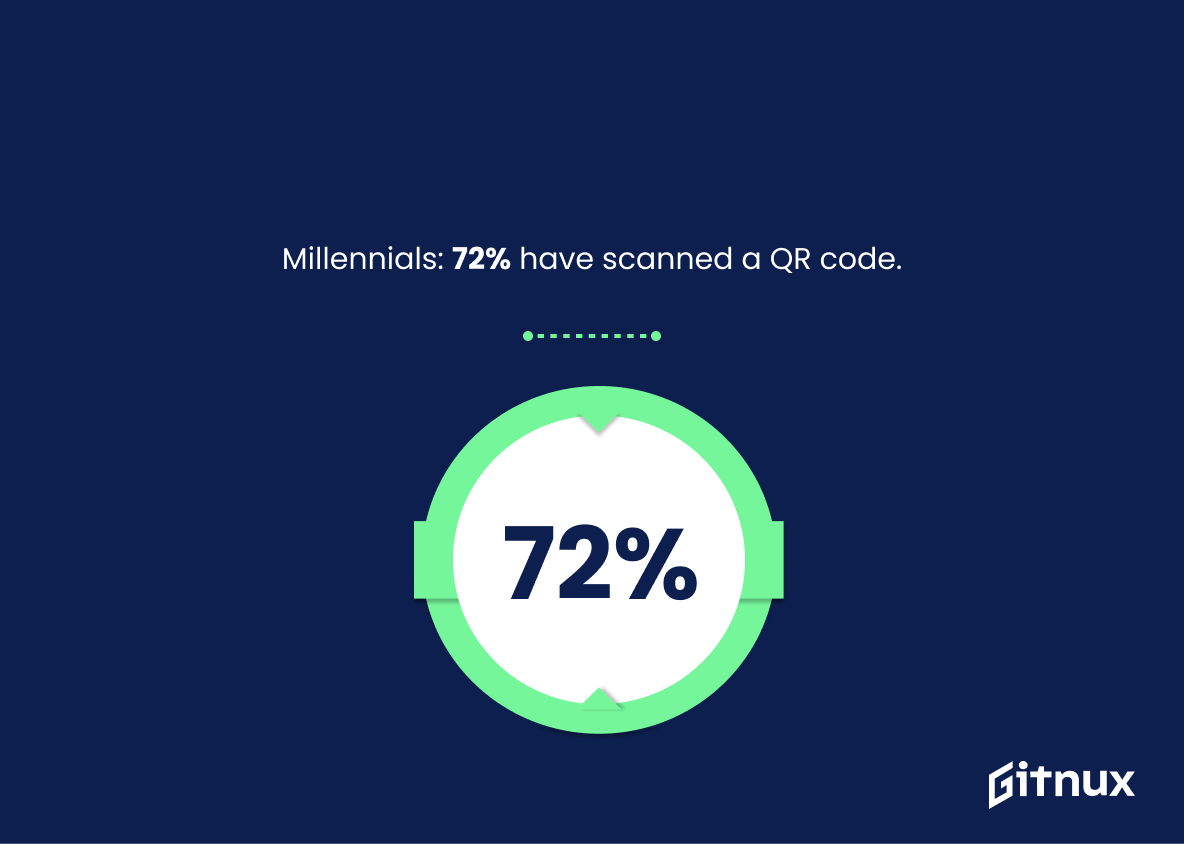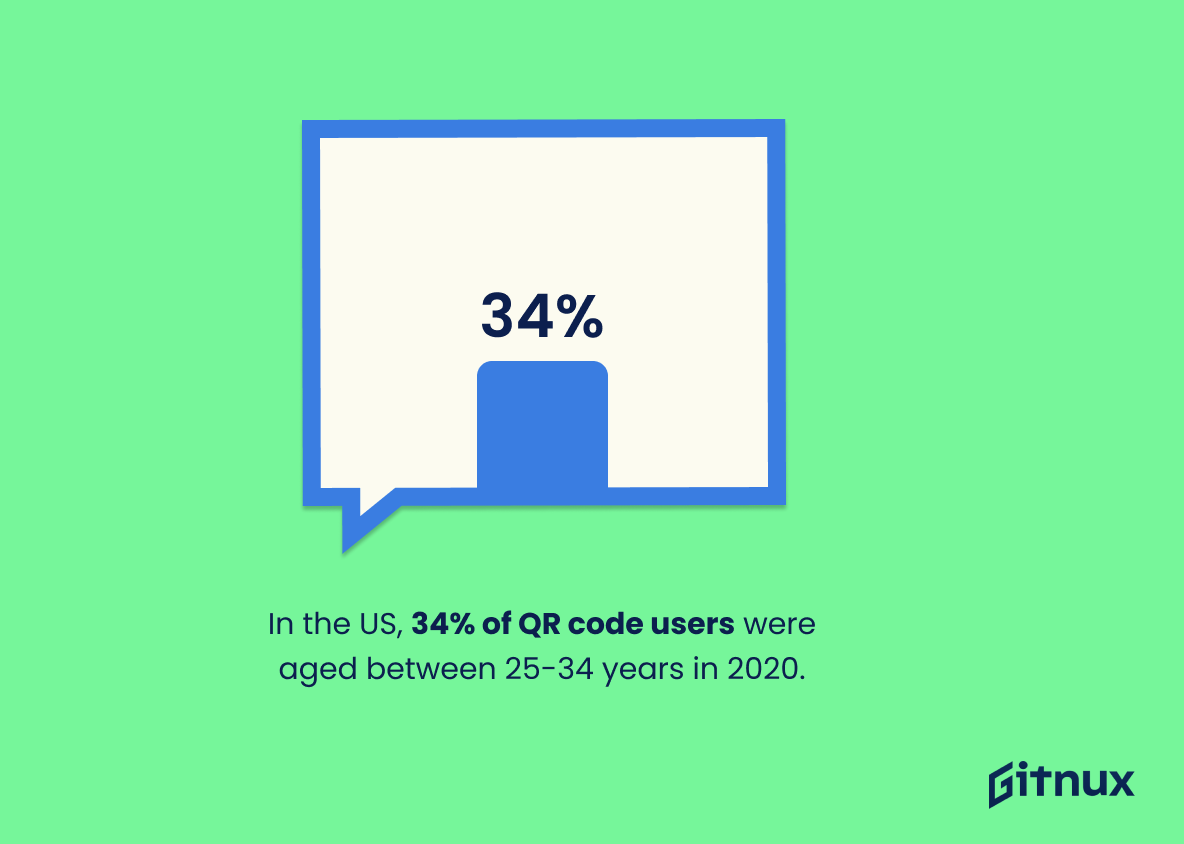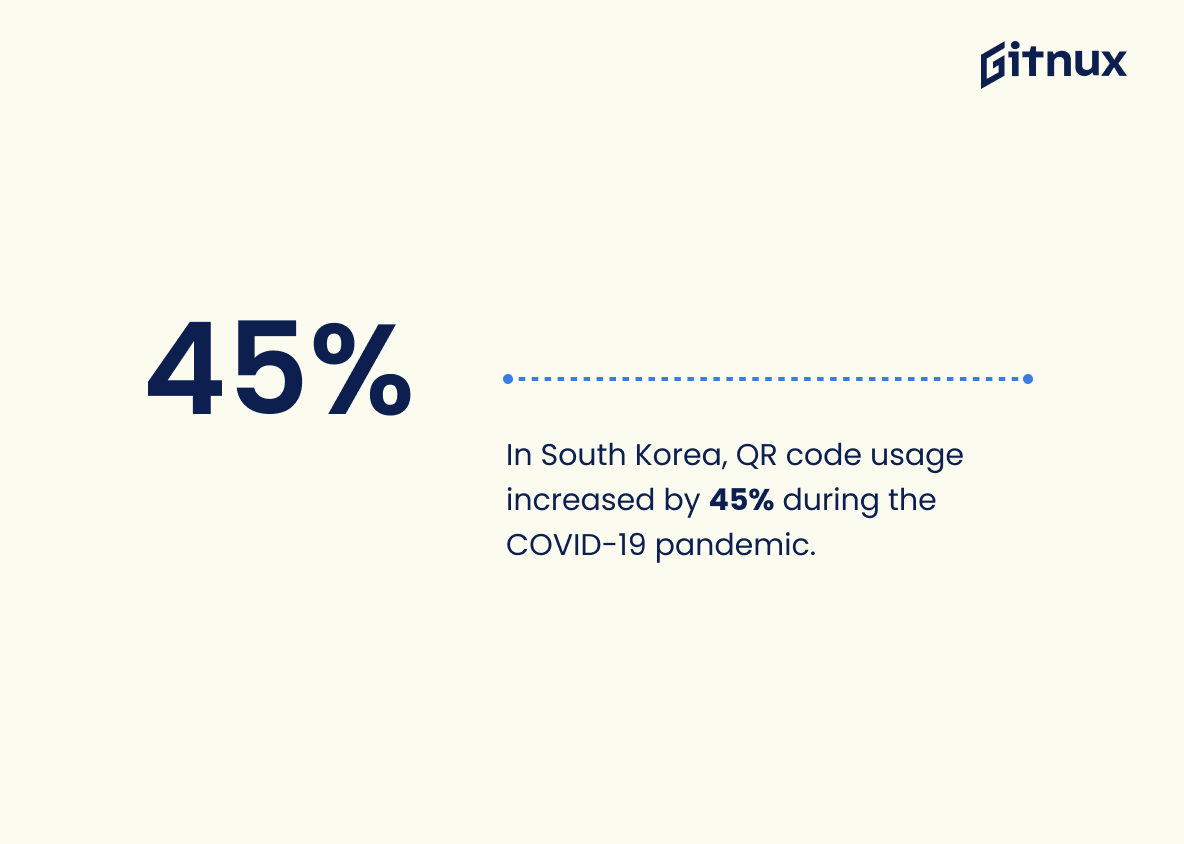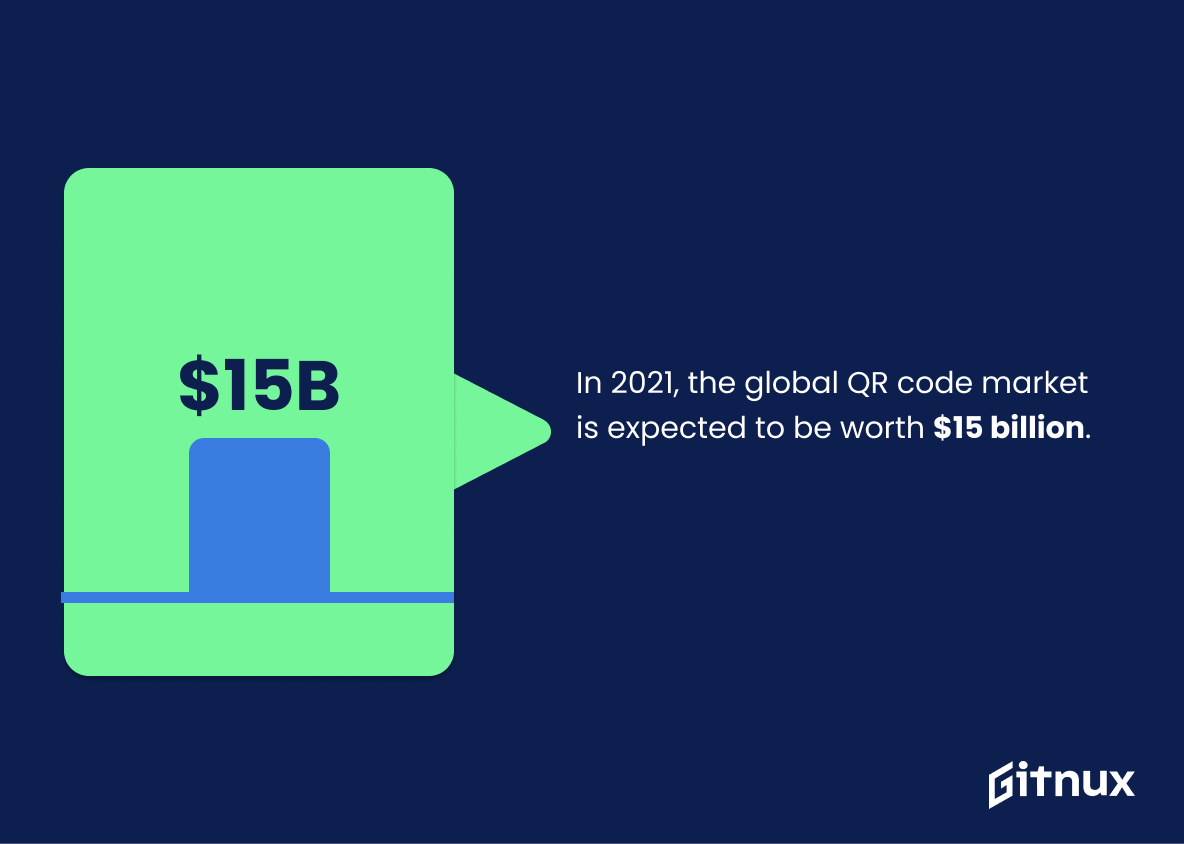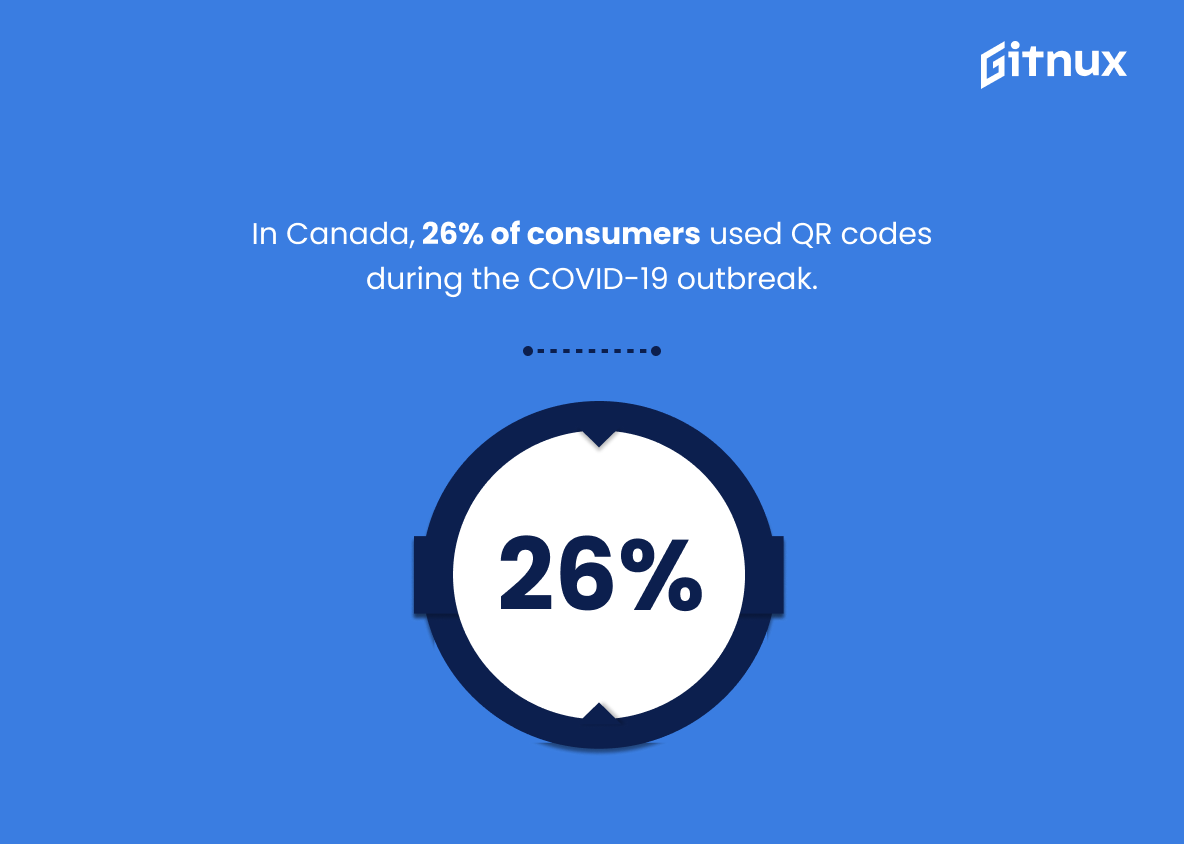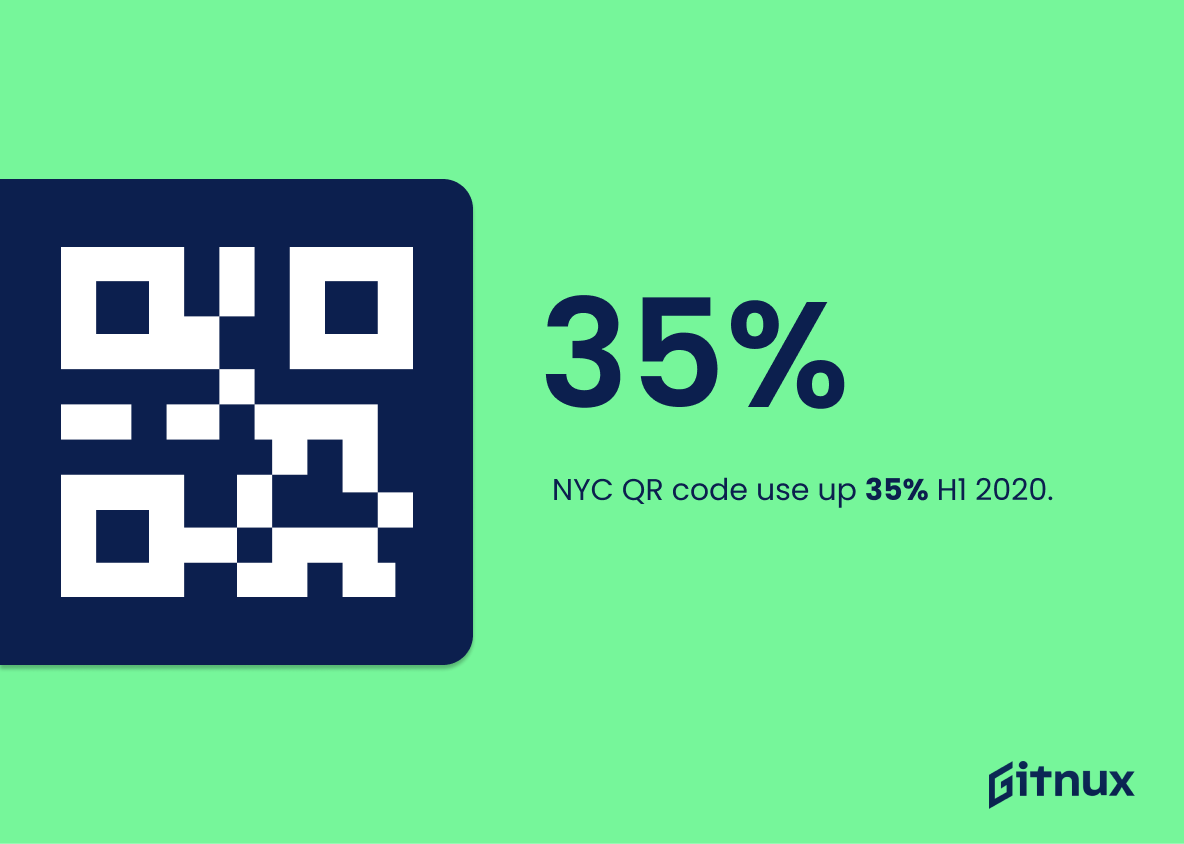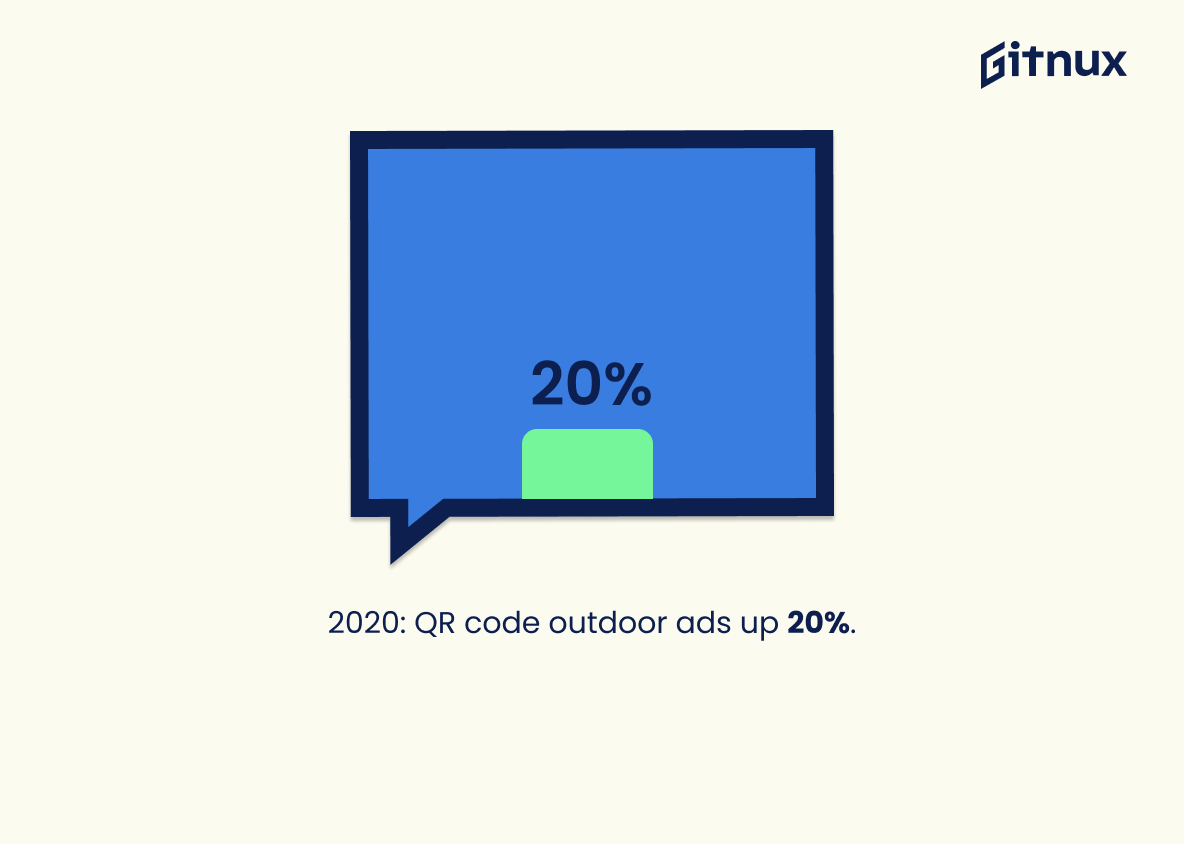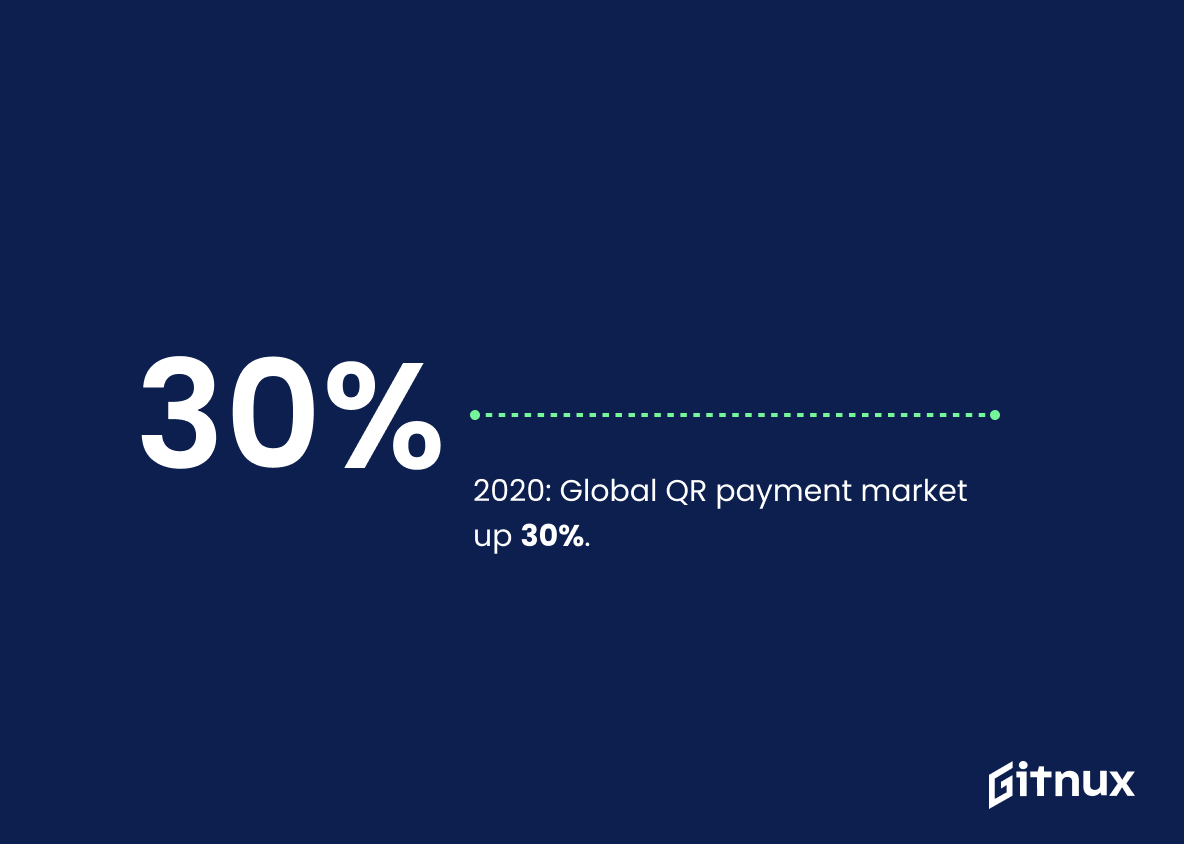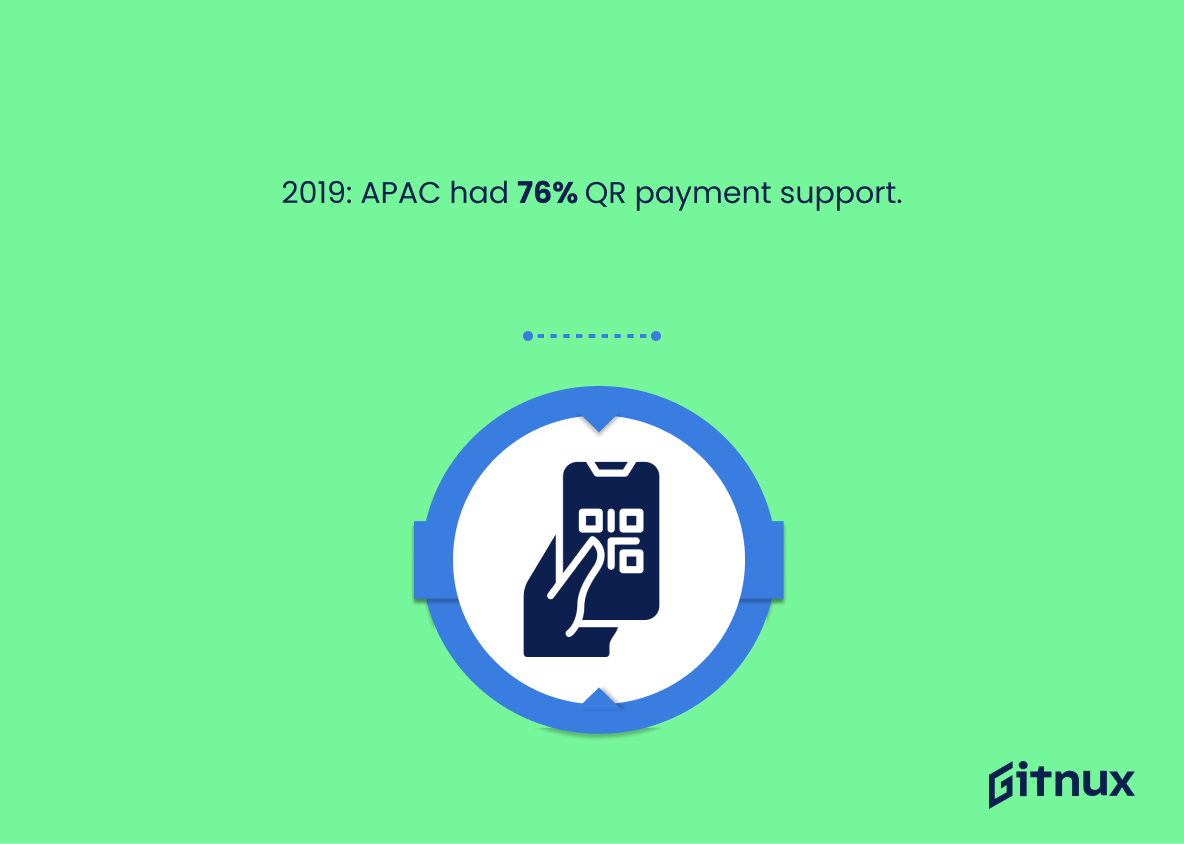QR codes have become an increasingly popular way to make payments, access information, and engage with customers. In 2020 alone, 11 million households in the United States used QR codes for various purposes. This number is expected to grow even further due to the COVID-19 pandemic which has caused a 28% increase in QR code usage worldwide. It is estimated that by 2021 there will be 5.3 billion QR code coupons redeemed through mobile phones globally and 1 billion smartphones accessing them by 2022.
In addition, 57% of university students in China have already used QR codes for payment while more than half of all total transactions were made in Asia during 2018 according to MarketsandMarkets research report on global trends related to this technology. Furthermore, 51% of businesses based within the US also adopted it as part of their marketing strategy last year while 72% millennials having scanned one at least once throughout their lifetime according to Semrush blog post about 4 ways how companies can use these two dimensional barcodes effectively today .
Moreover , 6 .2 billion scans were done only India during 2020 whereas 34 % users from USA aged between 25 -34 years old had accessed them same year . South Korea experienced 45 % growth rate regarding its usage since start of Covid 19 outbreak & 15 million devices equipped with scanning features back 2019 when Europe’s market was predicted reach $15 Billion till 2025 growing CAGR 6 .7%. Finally out –of home advertising (billboards banners posters ) using Qr Codes increased 20 % past year too
Qr Code Usage Statistics Overview
By the end of 2022, 1 billion smartphones will have accessed QR codes.
This statistic is a testament to the growing popularity of QR codes, demonstrating that they are becoming an increasingly important part of the digital landscape. It shows that QR codes are being used more and more, and that they are becoming an integral part of the way people interact with their smartphones. This statistic is a clear indication that QR codes are here to stay, and that they are becoming an increasingly important part of the way we use our phones.
In China, 57% of university students have used QR codes for payment.
This statistic is a testament to the growing popularity of QR codes in China, particularly among university students. It highlights the convenience and efficiency of using QR codes for payment, and serves as a reminder of the potential of this technology to revolutionize the way we make payments. It is an important piece of information that should be included in any blog post about QR code usage statistics.
In 2018, more than half of the total QR code transactions were made in Asia.
This statistic is a testament to the immense popularity of QR codes in Asia, highlighting the region’s enthusiasm for this technology. It is indicative of the fact that QR codes have become an integral part of everyday life in Asia, and that they are being used for a variety of purposes. This statistic is important to consider when discussing QR code usage statistics, as it provides insight into the current state of the technology in the region.
In 2019, 51% of businesses in the United States used QR codes.
This statistic is a testament to the growing popularity of QR codes among businesses in the United States. It shows that more and more businesses are recognizing the potential of QR codes and are taking advantage of their many benefits. This statistic is an important indicator of the increasing acceptance of QR codes as a viable marketing tool, and it is a valuable piece of information for anyone interested in learning more about QR code usage statistics.
QR codes are more popular among millennials, with 72% of them having scanned a QR code in their lifetime.
This statistic is significant in the context of a blog post about QR Code Usage Statistics, as it highlights the fact that millennials are particularly drawn to QR codes. This indicates that QR codes are a viable option for businesses looking to target this demographic, as they are more likely to engage with them. Furthermore, this statistic can be used to demonstrate the potential of QR codes as a marketing tool, as it shows that a large portion of the population is already familiar with them.
It is estimated that 6.2 billion QR code scans were done in India in 2020.
This statistic is a testament to the immense popularity of QR codes in India. It shows that QR codes have become an integral part of the Indian economy, with millions of people using them to make payments, access information, and more. This statistic is a clear indication that QR codes are here to stay and will continue to be a major part of the Indian economy in the years to come.
In the US, 34% of QR code users were aged between 25-34 years in 2020.
This statistic is significant in understanding the demographic of QR code users in the US. It highlights that a large portion of QR code users are within the 25-34 age range, indicating that this age group is particularly engaged with this technology. This information can be used to inform marketing strategies and target the right audience for QR code campaigns.
In South Korea, QR code usage increased by 45% during the COVID-19 pandemic.
This statistic is a testament to the power of QR codes in the face of the COVID-19 pandemic. It shows that South Koreans have embraced the technology as a way to stay safe and connected during a time of social distancing. This statistic is a great example of how QR codes can be used to facilitate contactless transactions and other activities, and it serves as a reminder of the importance of staying up-to-date with the latest technology.
In 2021, the global QR code market is expected to be worth $15 billion.
This statistic is a testament to the immense potential of QR codes in the modern world. It shows that QR codes are becoming increasingly popular and are being used in a variety of industries. This statistic is a clear indication that QR codes are here to stay and will continue to be a major part of our lives in the future.
In Canada, 26% of consumers used QR codes during the COVID-19 outbreak.
This statistic is a telling indication of how QR codes have become an increasingly popular tool for Canadians during the COVID-19 outbreak. It shows that a significant portion of the population has embraced the technology, which could be a sign of its potential for wider adoption in the future. This statistic is an important piece of information for anyone looking to understand the current state of QR code usage in Canada, and could be a valuable addition to any blog post about QR code usage statistics.
In New York City, QR code usage increased by 35% in the first half of 2020.
This statistic is a testament to the growing popularity of QR codes in New York City. It shows that more and more people are recognizing the convenience and efficiency of using QR codes to access information and services. This is an important trend to note, as it indicates that QR codes are becoming an increasingly important part of the digital landscape. As such, this statistic is an important piece of information to include in a blog post about QR code usage statistics.
In 2020, out-of-home advertising (billboards, banners, posters) using QR codes increased by 20%.
This statistic is a testament to the growing popularity of QR codes as a tool for out-of-home advertising. It shows that businesses are increasingly recognizing the potential of QR codes to engage customers and drive sales. As such, it is an important indicator of the effectiveness of QR codes as a marketing tool and provides valuable insight into the current trends in QR code usage.
In 2020, the QR code payment processing market is estimated to have increased by 30% worldwide.
This statistic is a testament to the growing popularity of QR code payment processing, indicating that more and more people are turning to this convenient and secure method of payment. This is an important development for businesses, as it means that they can offer their customers a more efficient and secure way to pay for goods and services. Furthermore, this statistic is a great indicator of the potential for QR code payment processing to become even more widely adopted in the future.
In 2020, approximately 58% of people in Brazil said they had used QR codes to make a transaction.
This statistic is a powerful indicator of the growing popularity of QR codes in Brazil. It shows that a majority of people in the country have embraced the technology and are using it to make transactions. This is an important piece of information for anyone interested in the usage of QR codes, as it demonstrates the potential of the technology in Brazil.
In 2019, in the Asia-Pacific region, 76% of network providers supported QR code payment systems.
This statistic is a testament to the growing popularity of QR code payment systems in the Asia-Pacific region. It shows that the majority of network providers are recognizing the potential of this technology and are investing in it. This is an important indicator of the increasing acceptance of QR code payment systems, and it is a key piece of information for anyone interested in the usage statistics of QR codes.
Conclusion
QR codes have seen a surge in usage over the past few years, particularly due to the COVID-19 pandemic. In 2020 alone, 11 million households in the U.S., 5.3 billion QR code coupons redeemed through mobile phones globally and 6.2 billion QR code scans were done in India all used this technology for various purposes such as payments or promotions. This trend is expected to continue into 2021 with an estimated 1 billion smartphones accessing QR codes by 2022 and a global market worth of $15 billion predicted by then too. Millennials are especially fond of using these codes, with 72% having scanned one at least once during their lifetime; however they are also popular among other age groups across different countries like China (57%), Brazil (58%) and South Korea (45%). Out-of-home advertising has also increased its use of them by 20%. All these statistics show that QR codes will remain relevant for many more years to come as businesses look towards digital solutions for transactions and marketing campaigns alike
References
0. – https://www.entryindia.com
1. – https://www.statista.com
2. – https://www.deccanherald.com
3. – https://www.paymentsjournal.com
4. – https://www.napkinmarketing.com
5. – https://www.chicagotribune.com
6. – https://www.juniperresearch.com
7. – https://www.marketsandmarkets.com
8. – https://www.researchandmarkets.com
9. – https://www.technode.com
10. – https://www.globenewswire.com
11. – https://www.retail-insider.com
12. – https://www.semrush.com
13. – https://www.adweek.com
14. – https://www.businesswire.com
ZipDo, cited June 2023: Qr Code Usage Statistics
